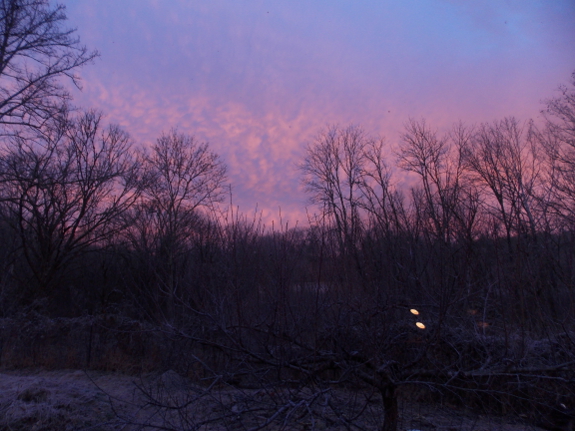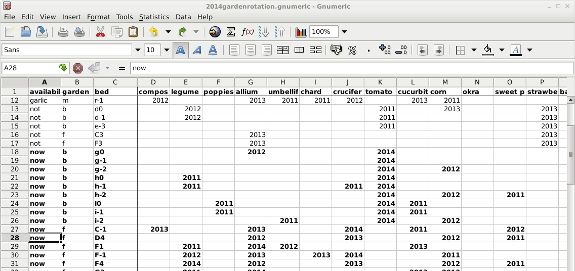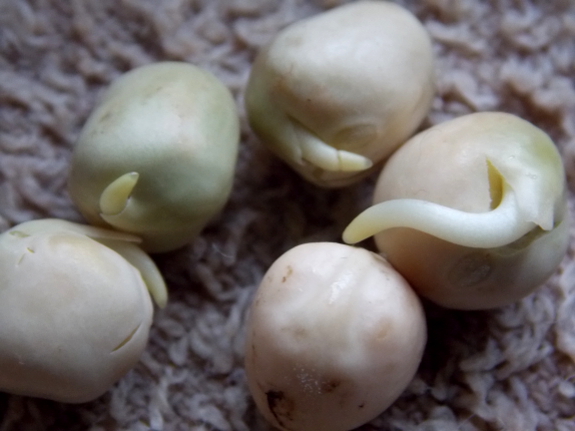
Planning the 2014 garden

I've been playing with different methods of garden rotation
over the last few years. The easy way to do this is to plant in
zones --- all of the crucifers go in zone A in 2013, in zone B in 2014,
in zone C in 2015, and then back to zone A in 2016. My long-term
plan at the moment is to rotate tomatoes using this method, moving them
through the sunniest, sprinkler-free spots: the forest garden, the back
garden, and the area around the gully.
But for the rest of the
garden, I prefer to keep things mixed up, with each bed being different
from its neighbors. That keeps the bugs confused and diseases
isolated, and also helps me hedge my bets for different kinds of
weather. However, since I also take into account corn pollination,
winter sun, summer shade, ease of quick-hoop erection, water-loggedness
(I know that's not a word....), and depth of soil, along with planting
history, the annual rotation takes quite a while to figure out.

My current method uses a
spreadsheet like the one shown above. I've considered hiring
someone to turn my method into an app, but since I've never used a smart
phone, I doubt that'll happen anytime soon. Instead, I just
manually hunt through until I find a bed that hasn't been planted with
the family I'm trying to find room for within the last three years, then
bold that line to remind myself it's been taken.
I generally plan out as much of the spring garden as I can until I get
stuck, then run a second round of rotation planning later in the
year. This year, it seems like I planted too much rye to allow me to set out my early May beds, but these things usually work out due to failed early plantings, so I'm not worried.

The final step is to pick through my seed box and figure out what I need to order. This year, I'm running a germination test
on old peas (which are clearly fine), parsley, and peppers; am
definitely ordering lettuce, basil, onions, cabbage, broccoli, carrots,
and corn; and have old-but-fine or saved seeds for everything else.
The photo at the top of
this post is a reflected sunrise --- color in the west instead of the
east on a cloudy morning. I'm not quite sure why that seemed
relevant to garden planning, but it did. Insert some poetic line
here about looking back and looking ahead all at once.
Want more in-depth information? Browse through our books.
Or explore more posts by date or by subject.
About us: Anna Hess and Mark Hamilton spent over a decade living self-sufficiently in the mountains of Virginia before moving north to start over from scratch in the foothills of Ohio. They've experimented with permaculture, no-till gardening, trailersteading, home-based microbusinesses and much more, writing about their adventures in both blogs and books.
Want to be notified when new comments are posted on this page? Click on the RSS button after you add a comment to subscribe to the comment feed, or simply check the box beside "email replies to me" while writing your comment.
- Remove comment
- Remove comment
- Remove comment
- Remove comment
- Remove comment
